Subtotal: £8.71
PREMIER GUPPY YELLOW MIX ASSORTED MALE Randomly Selected, Stunning Yellow Guppies that Thrive with Proper Care, Essential Fish for Creating a Balanced Aquatic Environment
£4.99 Original price was: £4.99.£3.87Current price is: £3.87.
Welcome these beautiful PREMIER GUPPY YELLOW MIX ASSORTED MALE fish into your aquarium. With their stunning yellow hues, they add vibrant color to any setup. Perfect for aquarists seeking peaceful companions, these guppies thrive in community tanks. Care for them and enjoy their graceful swimming!
22 in stock
Species Introduction
The Premier Guppy Yellow Mix Assorted Male, scientifically known as Poecilia reticulata, is a vibrant and captivating member of the Poeciliidae family, originating from the lush freshwater habitats of South America. These tropical freshwater fish are renowned for their stunning colors and lively behavior, making them a popular choice for both novice and experienced aquarists. Guppies thrive in a variety of environments, from slow-moving rivers to densely vegetated ponds, showcasing their adaptability to different water conditions. The yellow guppy, in particular, stands out with its bright, cheerful coloration, which can vary among individuals due to selective breeding practices. As you welcome these beautiful creatures into your aquarium, you will appreciate their dynamic swimming patterns and social interactions, which contribute to a lively community atmosphere.
Essential Care Guide for Your PREMIER GUPPY YELLOW MIX ASSORTED MALE
| Optimal Living Conditions | |
|---|---|
| Water Temperature | 24-27°C (75-81°F) |
| pH Level | 6.5-7.5 |
| Water Hardness | 4-12 dKH |
| Minimum Tank Size | 80L (20 gal) |
| Salinity | Freshwater |
| Care Level | Beginner Friendly |
Natural Behavior & Temperament
Guppies are known for their lively and social behavior, often seen darting around the tank in small groups. They exhibit a natural curiosity and will explore their environment, making them delightful to observe. These fish are generally peaceful and can coexist with a variety of community tank mates, provided that the tank is spacious enough to accommodate their active swimming patterns. Male guppies, like those in the Premier Guppy Yellow Mix, often display vibrant colors and engage in courtship behaviors, which can be fascinating to watch. They may chase each other around as part of their social interactions, but this behavior is typically harmless and part of their natural playfulness. Understanding their social dynamics is crucial for creating a harmonious aquarium environment.
Tank Setup Guide
Setting up an ideal environment for your Premier Guppy Yellow Mix Assorted Male involves creating a habitat that mimics their natural surroundings. A well-planted tank with plenty of hiding spots will not only enhance the aesthetic appeal but also provide security for your fish friends. Use a substrate that allows for plant growth, such as fine gravel or sand, and incorporate live plants like Java moss or Anubias to create a natural feel. Additionally, decorations such as driftwood or rocks can provide shelter and encourage natural behaviors. Ensure that the tank has a gentle filtration system, as guppies prefer calm waters. Regular maintenance, including water changes and substrate cleaning, will help maintain a healthy environment for your aquatic companions.
Water Quality Management
Maintaining optimal water quality is essential for the health and longevity of your guppies. Regular testing of water parameters such as pH, temperature, and hardness is crucial in ensuring a stable environment. Aim for a pH level between 6.8 and 7.8, as guppies thrive in slightly alkaline conditions. The water temperature should be kept within the range of 22-28°C (72-82°F) to promote optimal metabolic function. Additionally, guppies prefer moderately hard water with a hardness level of 5-20 dGH. Implementing a regular water change schedule, ideally 20-30% weekly, will help remove toxins and maintain water clarity. Utilizing a quality water conditioner can also aid in creating a safe environment for your fish friends.
Feeding & Nutrition
Important Feeding Note
A balanced diet is vital for the growth and health of your guppies. They are omnivorous and thrive on a varied diet that includes high-quality flake food, frozen or live foods such as bloodworms, brine shrimp, and daphnia. Offering a mix of these food types will ensure that your guppies receive essential nutrients and maintain their vibrant colors. Feed them 2-3 times a day, providing only what they can consume within a few minutes to prevent overfeeding and maintain water quality. Incorporating a high-quality spirulina-based food can also enhance their coloration and overall health.
Compatibility Guide
Guppies are typically peaceful and can coexist with a variety of community tank mates. Ideal companions include other small, non-aggressive fish such as neon tetras, rasboras, and corydoras catfish. However, it is essential to avoid larger or aggressive species that may see guppies as prey. Additionally, be cautious with other livebearers, as male guppies can become overly aggressive during breeding seasons. When introducing new fish to the tank, ensure that the aquarium is spacious enough to accommodate all inhabitants and monitor their behavior closely during the acclimation period.
Health & Wellness
Maintaining the health and wellness of your guppies involves regular observation and proactive care. Common health issues include fin rot, ich, and swim bladder disease, which can often be prevented through proper water quality management and a balanced diet. Signs of illness may include changes in behavior, such as lethargy or loss of appetite, as well as physical symptoms like discoloration or frayed fins. In case of any health concerns, prompt treatment is essential. Quarantine new arrivals before introducing them to your main tank to prevent the spread of diseases and ensure the health of your existing fish friends.
Breeding Information
Guppies are prolific breeders, and understanding their reproduction process can be rewarding for aquarists interested in breeding. Female guppies can give birth to 20-50 fry every 4-6 weeks, depending on their health and environmental conditions. To encourage breeding, provide a separate breeding tank with plenty of hiding spots for the fry, as adult guppies may eat their young. After giving birth, the female should be removed to prevent stress and protect the fry. The fry can be fed crushed flake food or specialized fry food until they are large enough to consume regular fish food. Monitoring the growth and health of the fry is crucial to ensure a successful breeding experience.
Acclimation Process
Acclimating your Premier Guppy Yellow Mix Assorted Male to their new home is a vital step in ensuring their health and reducing stress. Begin by floating the sealed bag containing the guppies in the aquarium for about 15-20 minutes to equalize the temperature. After this, gradually introduce the aquarium water into the bag over the course of another 15-20 minutes. This process helps the guppies adjust to the water parameters of their new environment. Once acclimated, gently release them into the tank using a net to avoid adding any transport water that may contain harmful substances. Monitoring their behavior for the first few days is essential to ensure they adapt well to their new surroundings.
Long-term Care
The lifecycle of guppies typically spans 2-3 years, depending on their care and environmental conditions. To ensure a long and healthy life, provide a stable environment with appropriate water parameters, a balanced diet, and regular maintenance. Regularly monitor their growth and behavior, and be prepared to adjust their care as they age. Keeping an eye on their social interactions can also help prevent stress and aggression among tank mates. By prioritizing their well-being and creating a nurturing environment, you can enjoy the beauty and charm of your guppies for years to come.
Natural Habitat Recreation
Recreating the natural habitat of guppies in your aquarium can enhance their well-being and encourage natural behaviors. In the wild, guppies inhabit shallow waters with abundant vegetation. To mimic this environment, incorporate live plants, floating vegetation, and natural substrates into your tank setup. This not only provides shelter and breeding grounds but also contributes to the overall aesthetics of your aquarium. Additionally, consider adding driftwood or rocks to create hiding spots and territories for your fish friends. Providing a well-structured environment will promote healthy behaviors and reduce stress levels in your guppies.
Seasonal Care Adjustments
As the seasons change, so do the needs of your guppies. During warmer months, ensure that the water temperature remains stable and does not exceed 28°C (82°F), as higher temperatures can stress your fish friends. In contrast, during colder months, you may need to employ a heater to maintain the ideal temperature range. Additionally, consider adjusting the lighting schedule to mimic natural daylight patterns, which can influence breeding behaviors and overall health. Regularly check water parameters, as changes in temperature can affect pH and hardness levels. By being attentive to seasonal changes, you can provide optimal care for your guppies throughout the year.
Expert Tips
For those looking to enhance their guppy-keeping experience, consider implementing some expert tips. Regularly rotating tank decorations and plants can stimulate your guppies’ curiosity and encourage exploration. Additionally, establishing a routine for water changes and feeding will help maintain consistency and stability in their environment. When selecting tank mates, always prioritize compatibility and avoid overcrowding, which can lead to stress and aggression. Lastly, consider joining online forums or local aquarist groups to share experiences and gain insights from fellow fish enthusiasts. By staying informed and engaged, you can provide the best care for your Premier Guppy Yellow Mix Assorted Male.
Troubleshooting
In the event of common issues arising in your aquarium, having a troubleshooting plan can be invaluable. If you notice signs of stress or illness in your guppies, first check water parameters to ensure they are within the recommended ranges. If you observe unusual behavior, such as hiding or lethargy, consider potential stressors such as aggressive tank mates or inadequate hiding spots. In cases of disease, prompt identification and treatment are essential. Research common guppy ailments and consult with an aquarium professional if necessary. By being proactive and attentive, you can quickly address any challenges and maintain a healthy environment for your fish friends.
Scientific Background
The scientific classification of guppies places them within the family Poeciliidae, which includes various species of livebearers. Their adaptability and resilience have made them a subject of interest in both scientific research and aquarist communities. Studies on guppy behavior, breeding, and genetics have contributed to our understanding of their care requirements and environmental needs. Conservation efforts are also in place to protect their natural habitats, as urbanization and pollution pose threats to their populations in the wild. By recognizing the scientific significance of guppies, aquarists can appreciate the role they play in biodiversity and aquatic ecosystems.
Advanced Care Techniques
For aquarists seeking to elevate their guppy care practices, advanced techniques can enhance the overall experience. Consider implementing a breeding program to selectively breed for specific traits, such as color variations or fin shapes. Additionally, utilizing a planted tank with a natural filtration system can create a self-sustaining ecosystem that benefits both the fish and the plants. Experimenting with different food types, including high-quality pellets and live foods, can improve the health and coloration of your guppies. Lastly, documenting your observations and experiences can contribute to a deeper understanding of their behaviors and preferences, enriching your journey as an aquarist.
Frequently Asked Questions
Q: What tank size is required for the Premier Guppy Yellow Mix Assorted Male?
For the Premier Guppy Yellow Mix Assorted Male, a minimum tank size of 30 litres is recommended. This allows adequate swimming space and helps maintain stable water parameters. Guppies are social creatures and thrive in groups; therefore, a larger tank can accommodate a small school, ideally 5 to 6 individuals. Ensure that the tank is well-filtered, as guppies are sensitive to poor water conditions. Additionally, a well-planted aquarium with hiding spots will help mimic their natural habitat and reduce stress. Regular maintenance, including water changes and monitoring, is essential for their well-being.
✓ Expert Tip
Utilising a heater to maintain a consistent temperature between 24-28°C can further enhance their comfort and health.
Q: What water parameters do guppies require?
Guppies thrive in well-maintained water conditions. The ideal temperature range is 24-28°C, with a pH level between 6.8 and 7.8. Soft to moderately hard water (5-19 dGH) is preferred. Regular testing of ammonia, nitrite, and nitrate levels is crucial; ammonia and nitrite should be at 0 ppm, while nitrates should be kept below 20 ppm. Maintaining stable water quality supports the health and vibrancy of your guppies. Regular water changes of 10-15% weekly can help keep these parameters in check, ensuring a safe and healthy environment.
✓ Expert Tip
Utilising a high-quality water conditioner can aid in removing harmful chemicals from tap water.
Q: How often should I feed my guppies?
Guppies should be fed small amounts 2-3 times a day. A varied diet including high-quality flake food, frozen or live foods like brine shrimp and daphnia, will provide essential nutrients. Be cautious not to overfeed, as uneaten food can pollute the water and lead to health issues. A good rule of thumb is to feed only what they can consume in 2-3 minutes. Regular feeding schedules help maintain their energy levels and colour vibrancy. If breeding, additional protein-rich foods can enhance fry growth and development.
✓ Expert Tip
Consider using a feeding ring to prevent food from floating away, ensuring all guppies get their share.
Q: What are the best tank mates for guppies?
Guppies are generally peaceful and can coexist with various community fish. Ideal tank mates include neon tetras, rasboras, and other small, non-aggressive species. Avoid larger or aggressive fish, which may view guppies as prey. Furthermore, consider the temperament of your fish friends when establishing your community tank. A well-balanced mix will not only enhance the visual appeal of your aquarium but also foster a harmonious environment. Always introduce new fish gradually to minimise stress and aggression.
✓ Expert Tip
Using a quarantine tank for new arrivals before adding them to the main aquarium can prevent disease spread.
Q: How do I properly acclimatise guppies to my aquarium?
Acclimatisation is vital for reducing stress in newly arrived guppies. Begin by floating the sealed bag in your aquarium for about 15-20 minutes to equalise the temperature. After this, gradually introduce small amounts of aquarium water into the bag every 5-10 minutes for about an hour. This process allows the guppies to adjust to the water chemistry of their new environment. Finally, gently net the guppies into the tank, avoiding the water from the bag to minimise contamination. Proper acclimatisation can significantly enhance their health and well-being.
✓ Expert Tip
Always monitor your new arrivals for signs of stress or illness for the first few days after introduction.
Q: What are the signs of healthy guppies?
Healthy guppies exhibit bright colours, clear eyes, and active behaviour. They should swim freely and interact with their tank mates. Observe their fins; they should be intact and not clamped against their bodies. Additionally, regular feeding and a healthy appetite are indicators of well-being. If you notice any lethargy, faded colours, or abnormal swimming patterns, these may signal stress or illness. Maintaining optimal water quality and a balanced diet enhances their overall health and longevity.
✓ Expert Tip
Regularly observing your guppies can help you catch any potential health issues early.
Q: How do I successfully breed guppies?
Breeding guppies is relatively straightforward. Ensure you have a ratio of one male to two or three females to reduce stress on the females. Provide a separate breeding tank or plenty of plants in the main tank for fry to hide. Guppies are livebearers, and females will give birth to live young after about 4-6 weeks of gestation. Post-birth, remove the fry to prevent them from being eaten by adults. Feed the fry with finely crushed flake food or specialised fry food to ensure proper growth. Maintaining good water quality is crucial to successful breeding.
✓ Expert Tip
Breeding nets can be useful for protecting fry from adult guppies during the early stages.
Q: What temperature should I maintain for guppies?
Guppies prefer a stable temperature range of 24-28°C. Fluctuations outside this range can lead to stress and health issues. A reliable aquarium heater is recommended to maintain optimal conditions. Additionally, it is wise to monitor the temperature with a thermometer to ensure consistency. During colder months, consider using a heater with a thermostat to prevent dramatic temperature changes. Maintaining the right temperature not only supports their health but also enhances their vibrant colours and overall activity.
✓ Expert Tip
Consider placing the heater near the filter outlet to ensure even temperature distribution throughout the tank.
Q: How long do guppies typically live in captivity?
In captivity, guppies can live anywhere from 2 to 5 years, depending on their care. Factors influencing their lifespan include water quality, diet, and overall environment. A well-maintained aquarium with stable parameters and a varied diet can significantly enhance their longevity. Regular health checks and prompt attention to any signs of illness will also contribute to a longer, healthier life. Providing a stress-free environment, along with proper tank mates, will ensure your guppies flourish in your aquarium.
✓ Expert Tip
Keeping a consistent feeding schedule and maintaining water quality will greatly benefit their lifespan.
Q: What type of substrate is most suitable for guppies?
Guppies thrive in a variety of substrates, but fine gravel or sand is often recommended. These substrates provide a comfortable environment for swimming and foraging. Additionally, they allow for the growth of beneficial bacteria that help maintain water quality. If you choose a planted aquarium, ensure the substrate supports plant growth, as live plants can enhance the habitat for guppies. Avoid sharp substrates, as these can injure their delicate fins. Regular cleaning of the substrate will also help prevent the build-up of waste and harmful chemicals.
✓ Expert Tip
Using a gravel vacuum can be beneficial for maintaining substrate cleanliness and promoting a healthy environment.
Q: What behavioural patterns should I expect from guppies?
Guppies are lively and social fish, known for their playful behaviour. You can expect them to swim actively and explore their surroundings. They often display courting behaviour, especially during mating seasons, where males will chase females and exhibit vibrant displays. Guppies thrive in groups and can often be seen schooling together. They may also establish a hierarchy within their groups. Providing plenty of hiding spots and plants will help reduce stress and allow for natural behaviours to flourish. Observing their interactions can be quite entertaining and rewarding.
✓ Expert Tip
Regular interaction with your guppies can enhance their trust and comfort in their environment.
Q: How can I prevent common diseases in guppies?
Preventing diseases in guppies involves maintaining high water quality and a stable environment. Regular water changes and monitoring parameters are crucial. Quarantine new fish before introducing them to your main tank to prevent the spread of pathogens. A balanced diet that includes varied foods will strengthen their immune system. Additionally, keeping the tank clean and ensuring proper filtration will help reduce the risk of disease outbreaks. Be observant of any changes in behaviour or physical appearance, as early detection is key to effective treatment.
✓ Expert Tip
Consider adding aquarium salt to the water to help prevent certain diseases, but ensure it is suitable for your aquatic companions.
Q: What lighting conditions do guppies prefer?
Guppies thrive in moderate lighting conditions, ideally around 8-10 hours of light per day. This duration mimics their natural habitat and supports plant growth if you have live plants in your aquarium. A gentle light source is preferable to avoid stressing the fish. Additionally, consider using a timer to maintain a consistent light schedule, which can help regulate their natural rhythms. If you observe excessive algae growth, you may need to reduce the lighting duration or intensity. A well-lit tank enhances the colours of guppies, making your aquarium visually stunning.
✓ Expert Tip
Using LED lights can provide energy efficiency while enhancing the colours of your guppies.
Q: How do I recognise stress in guppies?
Recognising stress in guppies is essential for their well-being. Signs of stress may include erratic swimming, hiding excessively, or loss of colour vibrancy. Additionally, if they are clamped fins or display lethargic behaviour, these are indicators of distress. Sudden changes in water parameters or aggressive tank mates can contribute to stress. It is crucial to maintain a stable environment and monitor their interactions. If stress is observed, consider making adjustments, such as improving water quality or rearranging tank mates to foster a calmer atmosphere.
✓ Expert Tip
Creating hiding spots with plants and decorations can provide a sense of security for your guppies.
Q: What natural habitat conditions should I replicate for guppies?
Guppies are native to freshwater streams and rivers in Central and South America, thriving in warm, shallow waters with plenty of vegetation. To replicate their natural habitat, provide a well-planted aquarium with floating plants and hiding spots. Maintaining a slightly acidic to neutral pH and warm water temperatures will create a comfortable environment. Additionally, incorporating driftwood and rocks can enhance the aquascape and offer hiding spaces. Mimicking their natural habitat not only supports their health but also encourages natural behaviours, making your aquarium a vibrant ecosystem.
✓ Expert Tip
Incorporating live plants can help improve water quality and provide natural filtration.



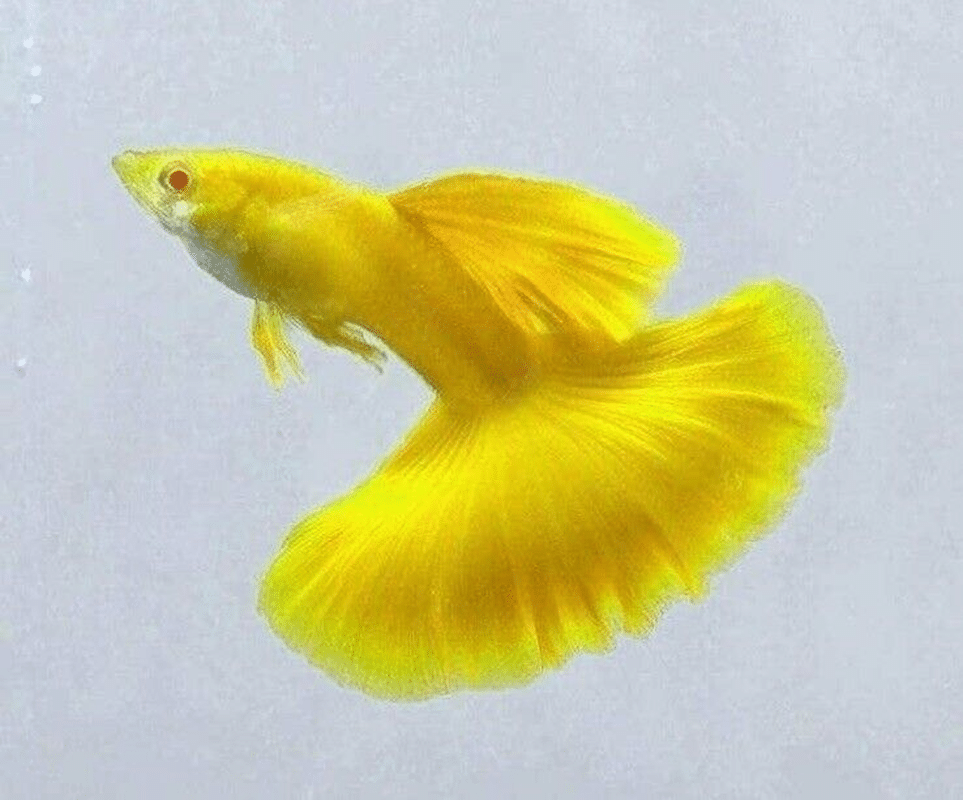




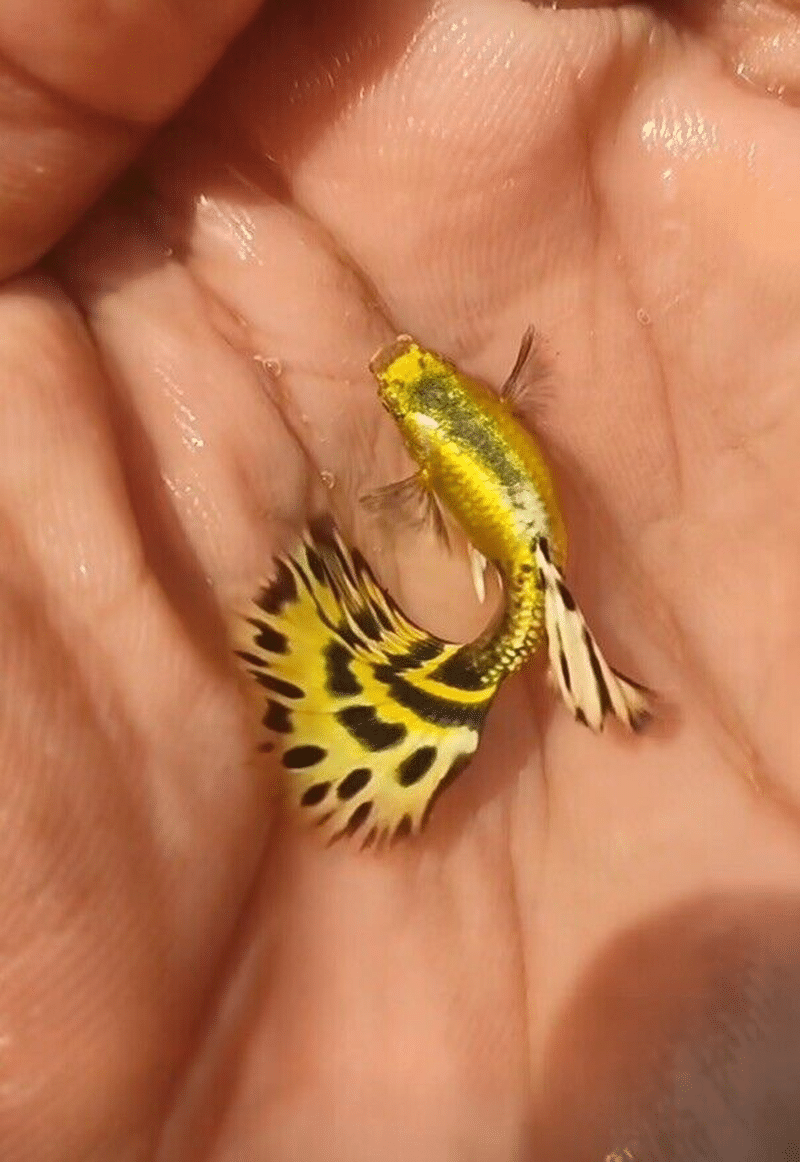
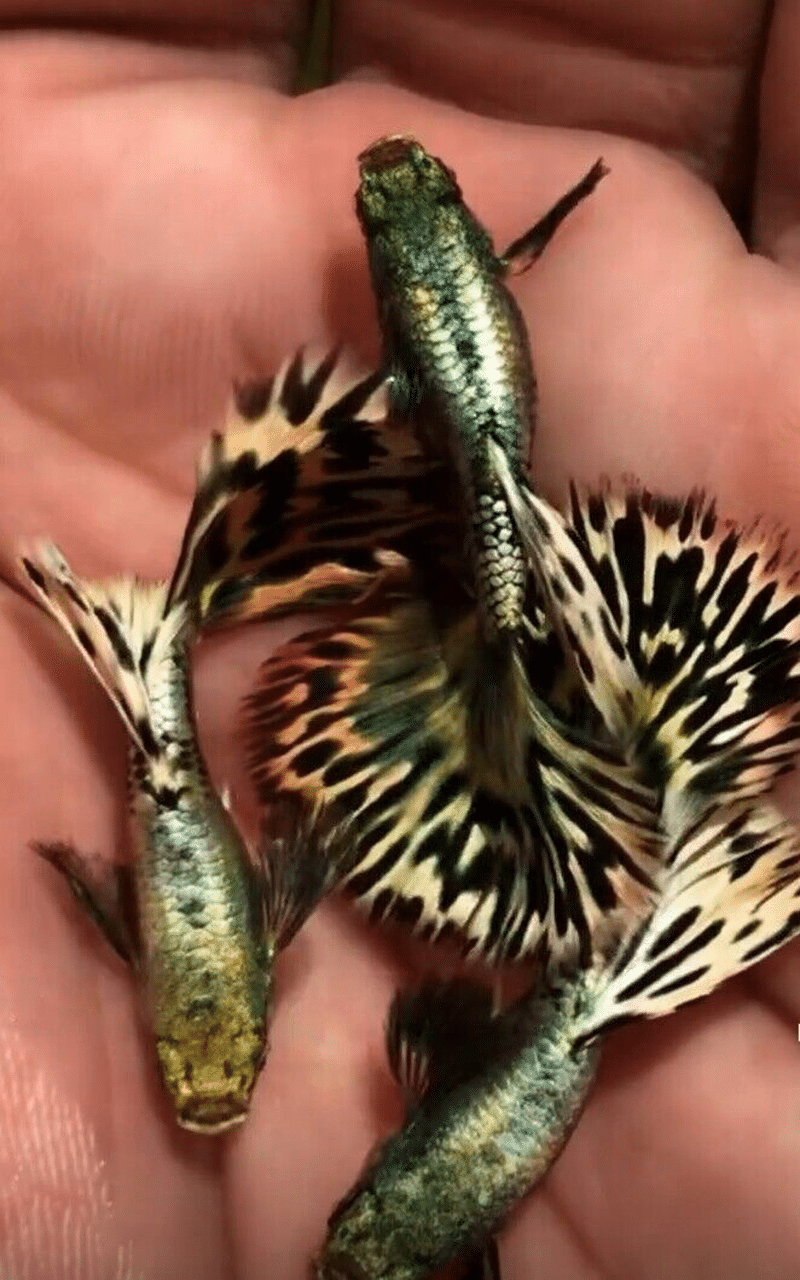


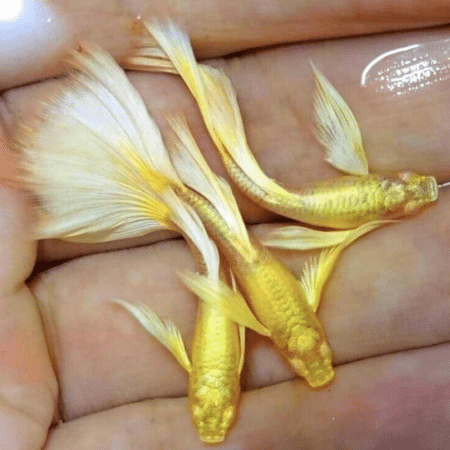
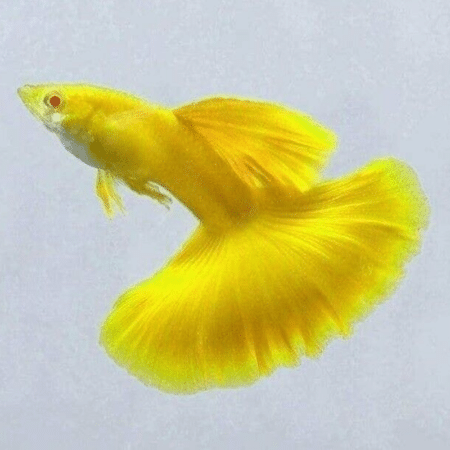



















Emily Roberts (verified owner) –
I recently purchased the Premier Guppy Yellow Mix Assorted Male, and I couldn’t be more thrilled! As a caring fish parent, my primary concern is the health and happiness of my aquatic friends, and these guppies have brought such joy to my tank. I received five vibrant males that are all around 1-2 inches in size, each one boasting stunning yellow and orange hues that really light up my aquarium. It’s been about two weeks since they arrived, and they quickly integrated with my other fish.
What sets these guppies apart from others I’ve tried is their lively personalities and health. They arrived in great condition, with no signs of stress, and the packaging was thoughtful and secure. I’ve noticed their playful behavior, which has definitely made my tank more dynamic.
If you’re looking to brighten up your aquarium, I highly recommend this mix! It’s perfect for community tanks, especially for those who want to add a splash of color. Just keep an eye on water parameters, as guppies thrive best in clean environments. Overall, I would absolutely buy again and suggest this to anyone looking for the best fish to enhance their setup.
Happy fishkeeping!